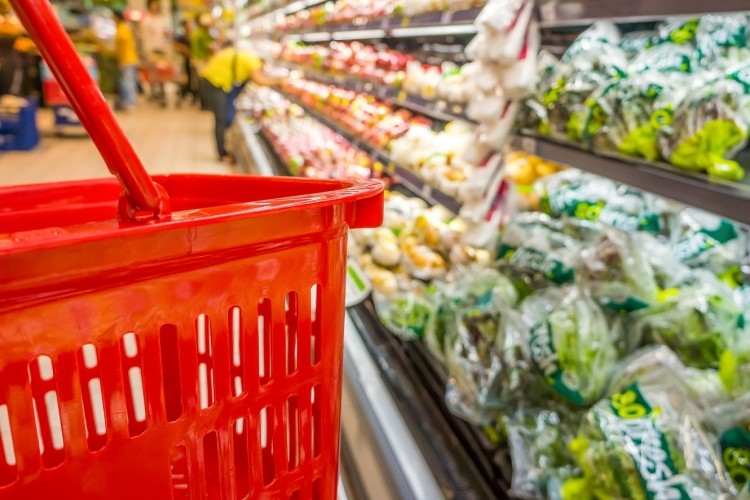'Smart’ packaging delivers food safety and security: ‘The packaging pays for itself’

Packaging is an essential component in maintaining the uninterrupted flow of perishable foods, an issue that has come under increasing scrutiny as the coronavirus pandemic places pressure on supply chains and surging demand for staples has led to empty shelves across Europe.
The COVID-19 crisis has sparked food shortage fears, particularly for fresh produce. Restrictions on the movement of seasonal agricultural labourers are likely to place increased pressure on supplies. Meanwhile, delays at the boarder have purportedly resulted in the waste of perishable shipments – a problem the European Commission hopes to have countered through the introduction of ‘green lanes’ designed to ease the flow of food across national boarders marked by increased restrictions.
“We are continuously hearing reports of vessels not being unloaded on time, and containers left sitting for long periods at harbours,” StePac business development manager Gary Ward observed. “Fresh produce exporters and importers are concerned that by the time their produce reaches the customer, the quality will have deteriorated considerably, impacting its value and increasing waste.”
In this context, sustainable packaging specialist StePac believes its modified atmosphere packaging solution can help alleviate many of the concerns related to food contamination and security.
Lengthening shelf life
StePac’s MAP solutions are based on 25 years of accumulated research and expertise in biology, plant physiology, phytopathology, and post-harvest sciences.
StePac’s advanced Modified Atmosphere Packaging (MAP) effectively delays ripening and ageing processes, inhibits microbial decay and preserves the quality and nutritional value of fruits and vegetables, according to the company.
“Our unique packaging products can extend the shelf life of fresh produce by 50% to 100% offering a lifeline for all stakeholders in the fresh produce supply chain and help weather the logistical storms,” Ward explained.
StePac packaging is already used ‘extensively’ to prolong the storage life of fruit and vegetables for long-haul shipments. “There are many examples of StePac's functional packaging providing value in the supply chain,” Ward told FoodNavigator.
The ‘significantly extended shelf-life’ achieved through StePac’s modified atmosphere packaging has been instrumental in helping growers, packers and distributors extend seasonality, ship by sea instead of by air and reduce waste along the supply chain, Ward noted.
Reeling off a list of examples, from the USA to Persia, he continued: “White asparagus is shipped from Peru to Europe by sea freight in both Xtend bulk and Xgo retail packaging. This not only results in lower logistical costs for the shipper, but it also results in an incredible 95% reduction in CO2 emissions per unit weight shipped (from 5,821 to 283 Kg/ ton)… Packing passion fruit at source in the final Xgo retail packaging solution enables Colombian exporters to ship by sea to Europe and avoid the high costs of repacking upon arrival. This also ensures no human contact from the time the fruit is packed until it is opened by the consumer.”
“These examples hopefully exemplify the value that the packaging provides in extending storability and providing an insurance policy during such uncertain times.”
Contamination-free for peace of mind
Another current major concern is the contamination risks that can arise from handling of foodstuffs. Customers are increasingly seeking packaged fresh produce that could sit naked on the shelves.
StePac offers an answer to this as well.
"StePac’s Xgo brand of retail packaging formats are hermetically sealed,” explained Ward. “They not only preserve the quality of the produce and extend shelf life, but also act as a physical barrier that prevents contact of the produce by the human hand from the moment it is packed until it is opened by the consumer.
“Once packed - the risk of produce being contaminated during the supply chain is effectively eliminated. Such assurance is not guaranteed when fruits and vegetables are sold loose or housed in packaging with punch holes or perforations.”
Preserving nutrients for health boost
The company’s unique polymer packaging formulation also preserves the nutritional value of fresh produce following prolonged storage.
A 2018 independent study conducted by the Scientific and Technological Research Council of Turkey analysed the post-harvest quality of Hicaznar pomegranate fruit packaged in StePac’s Xtend branded MAP packaging and noted that this packaging better preserves the vitamin C content than the naked control during six months of storage at 6°C.
In addition, nutritional analysis of shipments of fresh broccoli arriving to Japan revealed that the general nutritive value and vitamin C levels were better retained in Xtend iceless packaging than in standard iced packed broccoli.
Again, this feeds into consumer concern over COVID and a mounting desire to purchase foods with immune-boosting ingredients, Ward noted.
“Vitamin C is known to help strengthen the immune system and tackle infections, such as the common cold and flu. Consumers are seeking natural immune boosting sources.”
A solution that 'pays for itself'
While StePac’s products are ‘typically more expensive’ than conventional plastic packaging, Ward says it is nevertheless a cost-effective solution for food makers.
“The packaging pays for itself as the increased savings and revenues that it facilitates exceed the incremental cost of using the packaging,” he suggested.
“More importantly, they help reducing plastic waste, lower logistical costs, increase shelf life and help improve a wide range of the concerns linked to food contamination and food security.”


















